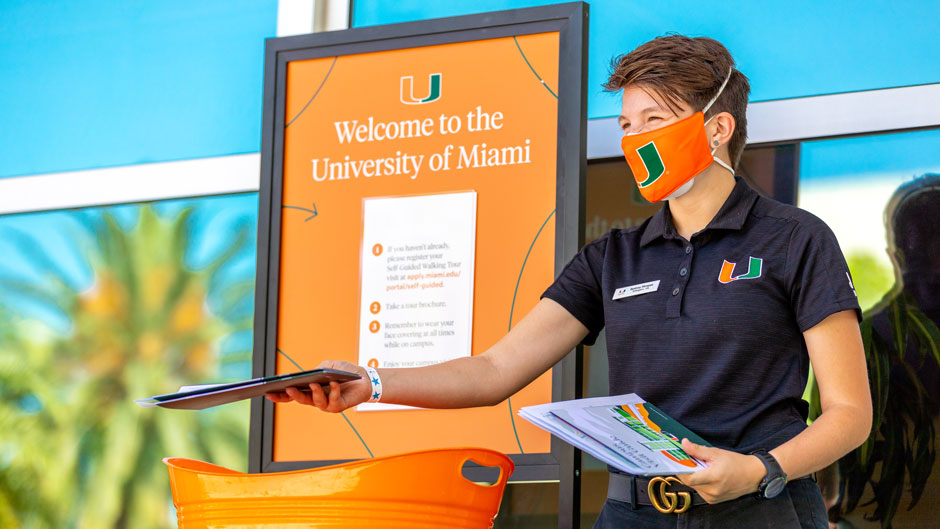For the second year in a row, the University of Miami is giving high school seniors the choice of whether to include standardized test scores with their applications.
While University officials say the move to “test optional” applications is not permanent, it is meant to alleviate the stress of finding a place to take the SAT or ACT and instead, allow more Hurricane hopefuls to easily apply. The decision was based on recommendations from the Office of Enrollment Management and was supported by the Faculty Senate, University administration, and its Board of Trustees.
“Students have been forced to overcome countless obstacles in the last year and we want to alleviate some extra stress for those who want to apply to the University of Miami. So, we have decided to eliminate the requirement for submitting standardized test scores for now,” said Jeffrey Duerk, provost and executive vice president for academic affairs.
John Haller, the University’s vice president of enrollment management, said they decided to make applications test optional last year because many testing sites for the SAT or ACT were closed during the pandemic or tests were cancelled at the last minute. When they learned that sites are still limited, the admissions office decided to extend the practice a second year.
“Right now, the ability for students to take standardized tests is still uncertain for the fall. So, in order to ensure access for high-achieving students to apply to the University of Miami, it was the right decision to make,” Haller said.
The move mirrors a growing trend of U.S. colleges and universities that have chosen to go test optional during the pandemic. Many other colleges and universities decided to go test optional permanently in recent years because of concerns that standardized tests are biased against those with fewer socioeconomic resources. In addition, growing evidence points to the fact that a student’s grade point average and involvements in and out of school are greater predictors of success in college than the tests. Just last week, the University of California system of 10 campuses announced that it will no longer accept SAT or ACT scores on applications, The New York Times reported.
Although University admissions officers have always used a holistic review to evaluate applicants, Haller said that the new test optional practice likely highlighted other aspects of a student.
“This practice allowed us to be even more holistic in our review, rather than relying more on one test and one day of a student’s life,” he added.
In the past academic year— with its new test optional practice—the University has been able to attract thousands more applicants. In fact, the University saw its largest pool of applications this past academic year, with more than 42,000 students striving to become a Miami Hurricane. This represents a 38 percent increase in applications since the fall of 2017, Haller said. The University admitted just 28 percent of applicants, which is the second most selective admissions cycle in history, he added.
According to Haller, several factors led to this year’s strong applicant pool. While it may have come from the fact that the University waived the requirement for standardized tests, students could have also been driven to apply because the University was able to offer in-person campus tours this spring (with COVID-19 precautions taken) when many other campuses could not. In addition, the University was also able to meet 100 percent of admitted students’ demonstrated financial need at admission, a goal of the University’s Roadmap to Our New Century.

